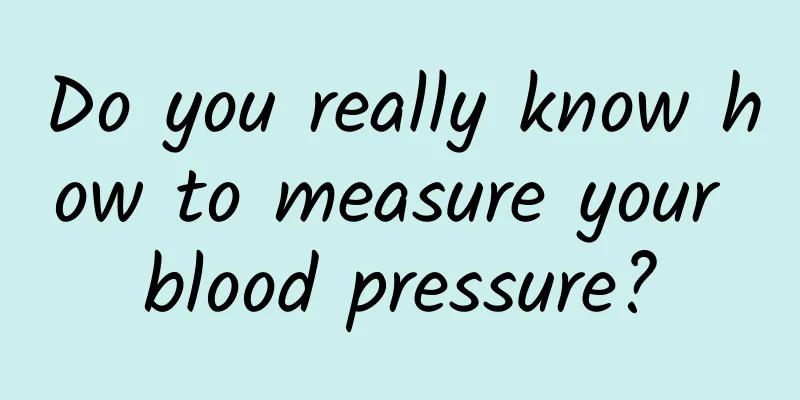Do you really know how to measure your blood pressure?

|
Hypertension refers to excessive pressure of blood on blood vessel walls. Normal blood pressure should be less than 120/80 mmHg. The average of all blood pressure readings measured at home for 5-7 consecutive days without the use of antihypertensive drugs is ≥135/85 mmHg, or the systolic blood pressure (SBP) is ≥140 mmHg and/or the diastolic blood pressure (DBP) is ≥90 mmHg on three occasions in the clinic without the use of antihypertensive drugs on different days. Hypertension can be diagnosed. Hypertension, as an "invisible killer", is often ignored by people. Hypertension is closely related to many complications. The risk of coronary heart disease in hypertensive patients is 2.6 times higher than that of normal blood pressure patients. Hypertension is also one of the important risk factors for the first and recurrence of stroke. Generally, kidney damage will occur after hypertension persists for 10-15 years, and some patients even develop renal failure. So, if you want to understand your blood pressure and actively prevent and treat hypertension, you must monitor your blood pressure. How to measure blood pressure correctly? We can follow the following two charts: For easy memory, the following formula is summarized: empty your urine before measuring, sit quietly at the table for a while, measure your forearm at the same level as your heart, and put your feet naturally on the ground. Take the average of 2-3 times and remember it twice a day. Because most people's blood pressure in the right upper limb is slightly higher than that in the left upper limb, the blood pressure is usually measured in the right upper limb. If it is the first measurement, the blood pressure of both upper limbs is often measured together. If the difference between the measurement results of the left and right arms is within 10mmHg, subsequent measurements are generally based on the blood pressure of the upper limb with the higher value. If the difference in blood pressure between the two upper limbs is greater than 20mmHg, you need to see a doctor in time to rule out vascular stenosis. If the blood pressure is elevated after measurement, you need to see a doctor and decide whether antihypertensive treatment is needed and the speed and magnitude of blood pressure reduction will be determined based on whether there are comorbidities. The action of paying attention to blood pressure will never stop, let us work together and cheer for a healthy life! |
>>: Will people definitely get cataracts when they get older?
Recommend
What snacks should women drink red wine with?
Red wine can promote blood circulation. From the ...
How to prevent pregnancy without taking birth control pills
Emergency contraception has a certain practical e...
Breast development process
When girls reach a certain age, their breasts wil...
Leucorrhea occasionally flows out like water
If the leucorrhea flows out like water and has no...
Can pregnant women take Daxi chewable tablets?
Pregnant women belong to the elderly, weak and di...
How to treat premature amenorrhea?
Nowadays, more and more people will experience pr...
What harm does Qinggong do to women's body
Uterine curettage is a secondary surgery, mainly ...
What are the effects and functions of bitter chrysanthemum? How to eat bitter chrysanthemum
The bitter melon contains rich carotene, vitamin ...
What causes women's waist and legs to feel tight?
Lower back pain during menstruation is mostly lum...
Why are ETC services free now and all major banks promoting ETC? What's going on?
Only one ETC can be applied for per car. Car owne...
Buying the wrong contact lenses can damage your cornea! Many people don't know these indicators that you must look at.
Nowadays, many people choose to wear contact lens...
Leucorrhea with blood 10 days before menstruation
There are several obvious characteristics of a wo...
Why more and more young people cannot live without "life-saving coffee" every day?
Audit expert: Yin Tielun Deputy Chief Physician, ...
How to remove the hot pot smell on my coat? Can I eat hot pot alone?
When eating hot pot, eating starchy foods first c...









